What Plants Grow In Grasslands?
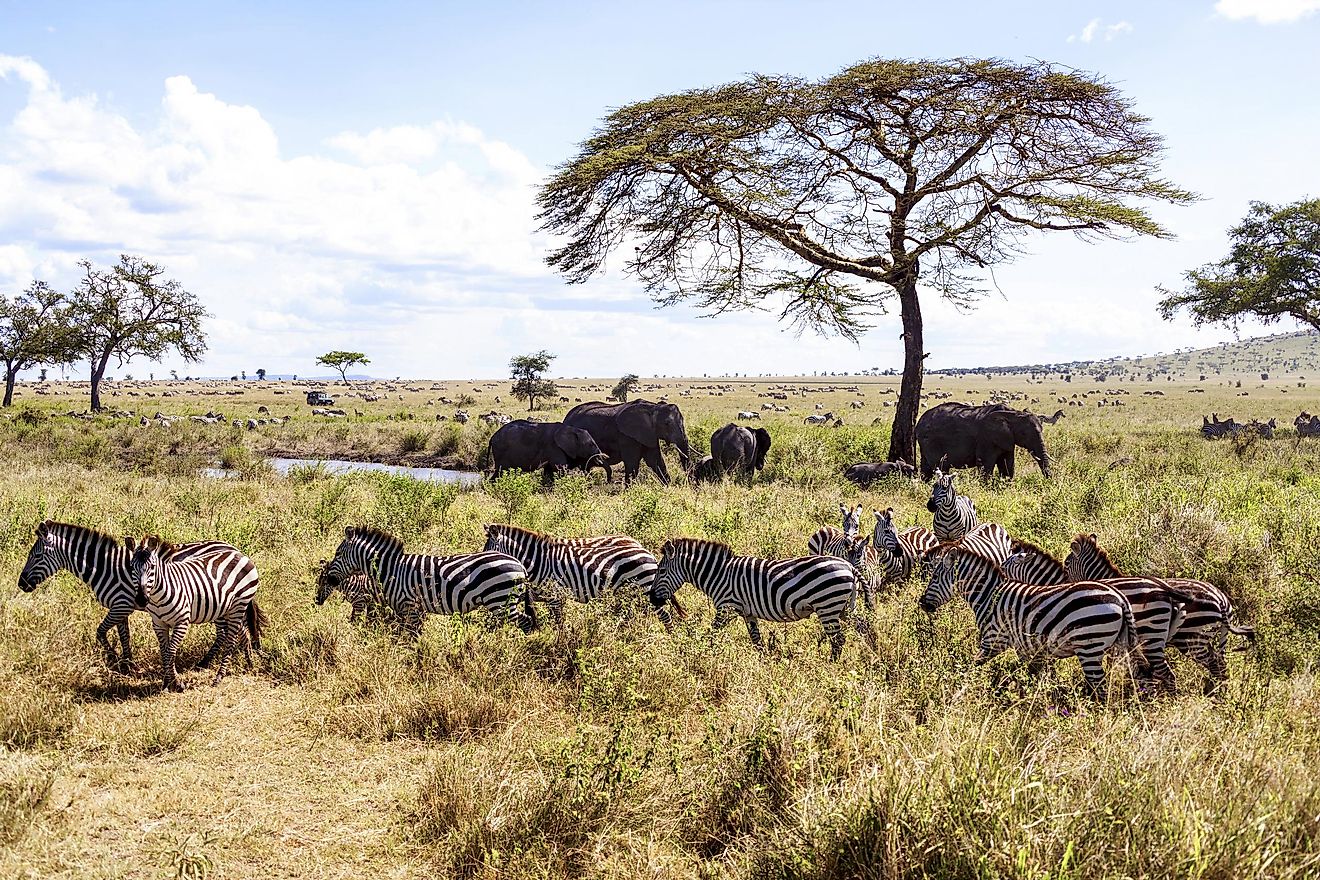
- Grasslands are characterized by low levels of precipitation and grassy vegetation
- Plants found in grasslands have low growing points to accommodate for grazing herd animals that populate grassy regions
- Most grasslands have very little tree growth, and what trees due exist tend to be thick-skinned, deep-rooted, and unappetizing to animals.
- Temperate grasslands have a high density of wildflower. Some of the common varieties include, buffalo grass, cacti, sagebrush, blazing stars, goldenrods, asters, milkweed, lupines, purple coneflower, clovers and sunflowers.
- Because tropical grasslands do not go through cold periods like other regions, but instead growth and dormant periods, they tend to have more tree life than other grasslands.
A grassland is a large expansive (ecosystem) characterized by low precipitation and grassy vegetation. On average, grasslands receive between 500 and 900 millimeters (20 – 35 inches) of rain per year, which limits the type of plant that can be found there. These regions usually have a distinct lack of trees or larger plants. Instead, they are populated by various grasses and low shrubs. Grassland vegetation also tends to have growing points which occur much closer to the soil. Because of this, these grassy plants are resistant to grazing animals which eat the tops of the plants, such as blades of grass, but do not damage the plant’s growing system. It is ideal for herd animals like deer, bison, antelope or other grazers which populate grasslands.
Where Are Grasslands Found?
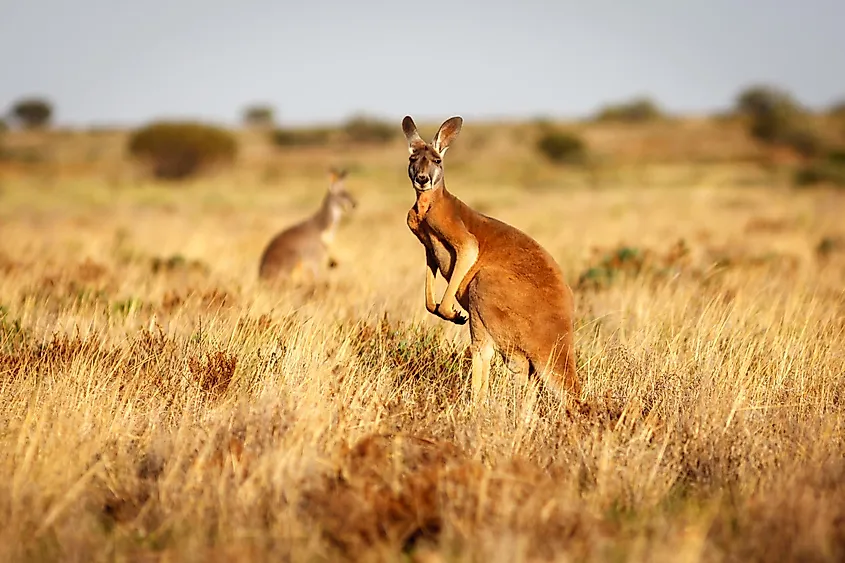
Grasslands exist on all of the continents excluding Antarctica, and are wide spread throughout the world. Because they exist in many countries and geographic locations, the average temperature of a grassland ranges greatly depending on its location. Temperatures can reach as low as -20C (-4 F) in some areas, and as high as 30C (86F) in others. Grasslands also have different names depending on where in the world they exist. In North America, grasslands can be found in the inland provinces and states, and are usually classified as prairies or plains. In South America, the pampas are in the southern and western regions, Central Eurasia has the steppes, Africa sees various grassland plains in multiple countries across the continent, and south eastern Australia has grasslands breaking up the large expanses of desert. Though theses grasslands have different animal populations, and a wide range in temperatures, they are all classified by the same defining characteristics of grassy vegetation and low precipitation.
Plants Growing In Temperate Grasslands
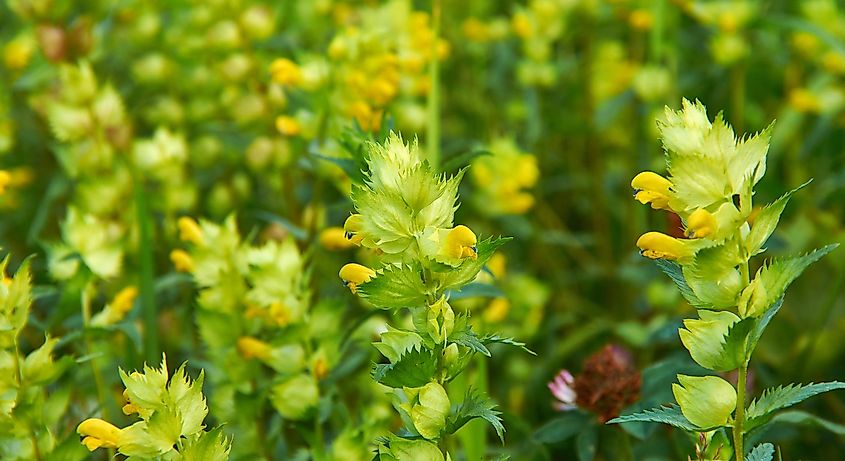
Grasslands can be split into two types of biomes. These are referred to as temperate grasslands or tropical grasslands. Temperate grasslands can be found in various countries all over the world. Some examples of temperate grasslands include: plains and prairies in central North America, the puszta in Hungary, the downs of New Zealand and Australia, pampas in Argentina and the steppes of Russia. Though their locations vary widely, temperate grasslands tend to take one of two forms. Either they are wet and humid, producing tall grasses prairies, or they are found in areas that have extreme temperature ranges, and have hot summers and cold winters. These regions are populated by dry short grasses. Temperate grasslands get roughly 10 – 30 inches of rain per year and have a high density of wildflower. Some of the common varieties include, buffalo grass, cacti, sagebrush, blazing stars, goldenrods, asters, milkweed, lupines, purple coneflower, clovers and sunflowers.
Plants Growing In Tropical Grasslands
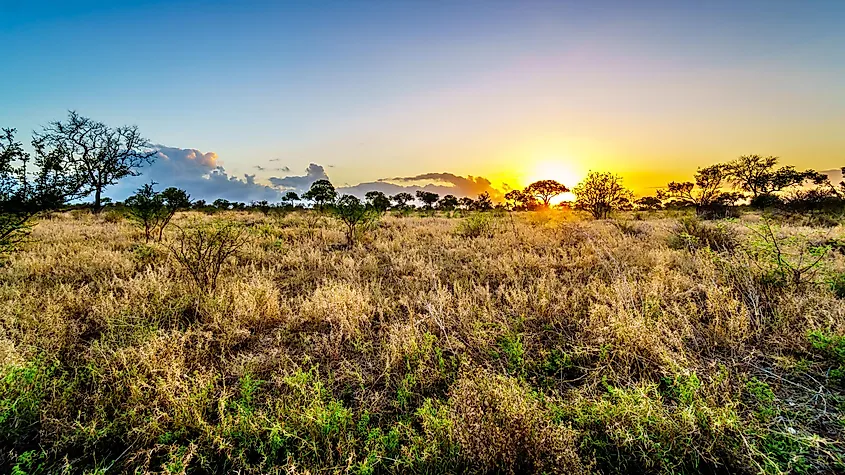
Tropical grasslands, on the other hand, have a higher average precipitation level, ranging between 20 and 50 inches per annum. Because tropical grasslands do not go through cold periods like other regions, but instead growth and dormant periods, they tend to have more tree life than other grasslands. These trees still differ from boreal or rain forests, as the trees have to withstand harsh droughts and fires, porous soil, and infertile conditions. Also due to the abundance of grazing animals, these trees have developed deep roots, thick bark and harsh sap to deter animals. Some of the tree species common in tropical grasslands include: baobab trees, maketti trees, jackalberry trees, whistling thorn, candelabra trees, umbrella thorn acacia, kangaroo paw trees, river bushwillow and black chokeberry. Tropical grasslands also have very large grazing and herd animals, like elephants, antelope and wildebeasts. Because of this, and the harsh dry seasons, a number of tall hearty grass species have developed in the region including: Bermuda grass, elephant grass, blue fescue, feather grass, Rhodes grass, red oats grass and lemon grass.
Effects Of Climate Change On Grassland Vegetation
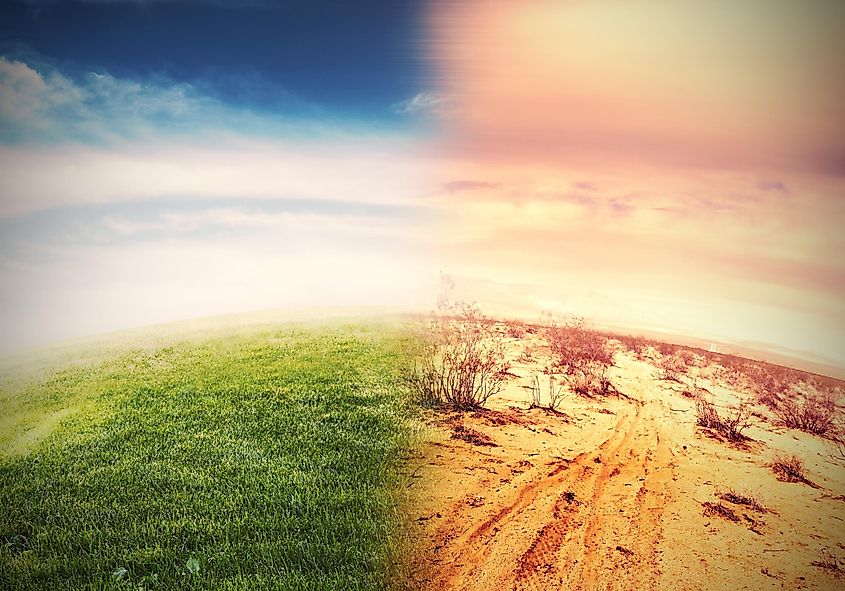
Due to their low precipitation levels, grasslands are very vulnerable to climate change. Extreme changes to temperature or rainfall can have devastating effects on the regional vegetation, and as a result, the wildlife in the area. These bioregions have seen temperature changes of all kinds, including increased seasonal and annual temperatures. Climate change has also affected minimum and maximum temperatures in many areas, meaning the grasslands experience harsher hot or dry seasons, and colder, harsher winters. Changes to precipitation pattern have also been increasing globally. While many regions are experiencing droughts and fires, such as in Australia, other biomes have had increased rains and flooding. These changes not only effect the vegetation, but also the wildlife in the region. Western North America has been greatly impacted by climate change and grasslands in these areas have had increased levels of drought and fire. These arid and semi-arid regions have shown increases in invasive species such as cheatgrass, which grows very quickly in dry climates, and is highly flammable. This has led to an increase in fire frequency and distribution across much of the western United States and Canada. Other effects of decreased precipitation can be seen in other areas worldwide. A lack of water can mean no breeding grounds for waterfowl, or dryer conditions can allow predators access to areas they otherwise would not hunt in such as has been observed in African savannahs. In this way, climate changes can greatly disrupt biomes, and offset the delicate balance of a given ecosystem.
Effects Of Human Activities On Grassland Habitats
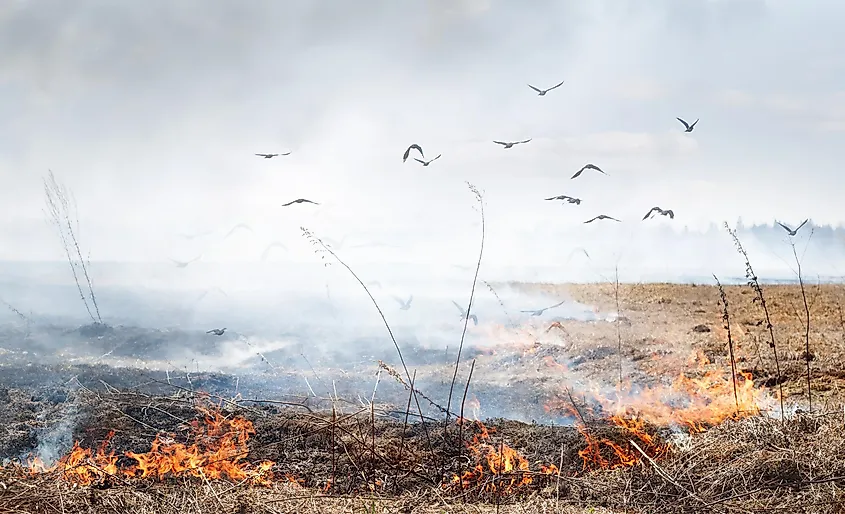
In addition to climate changes, grasslands are also one of the most popular areas for human development. This is mainly due to the fact that the flat land is much easier to clear than a forested area. Because of this, grasslands are often cleared and repurposed for agricultural uses. This has happened in abundance in prairie areas, such as in North America, where natural grasslands have been replaced with crop fields. Only 2% of natural grasslands still exist in North America, with the rest being repurposed for development or agriculture. In many areas even natural grasslands are at risk from existing agricultural systems. Australia has an abundance of cattle farms, and many of these farms allow their cattle to roam free, eating natural grasslands. While free range farming can be much more sustainable than other options, this can still have a devastating effect on grasslands that would not naturally see such heavy traffic from grazing animals which can decimate grass populations.











